This article was co-authored by Justin Barnes. Justin Barnes is a Senior Home Care Specialist and the Co-Owner of Presidio Home Care, a family-owned and operated Home Care Organization based in the Los Angeles, California metro area. Presidio Home Care, which provides non-medical supportive services, was the first agency in the state of California to become a licensed Home Care Organization. Justin has over 10 years of experience in the Home Care field. He has a BS in Technology and Operations Management from the California State Polytechnic University - Pomona.
wikiHow marks an article as reader-approved once it receives enough positive feedback. This article received 15 testimonials and 85% of readers who voted found it helpful, earning it our reader-approved status.
This article has been viewed 461,625 times.
Falling can pose a serious risk of injury, even if it is only from a standing height. Depending on your age, health and fitness levels, the severity of those injuries can vary. However, there are a few techniques that anyone can use if they find themselves falling to help reduce the impact and prevent injury.
Steps
Falling Properly
-
1Protect your head. The most important body part that you need to protect in a fall is your head.[1] Head injuries can be very serious, even deadly. Make sure you prioritize protecting your head as you fall by properly positioning it.[2]
- Tuck your your chin down, lowering your head.
- If falling down, face first, turn your head to the side.
- Bring your arms up to head level for additional protection. Put them in front of your head if falling forwards or behind your head if falling backwards.
- If you are taking anticoagulants or blood thinners and fall and hit your head, this may result in a dangerous and life-threatening bleed inside your skull. Call your doctor, who may tell you to go to the hospital for a CT scan.
-
2Turn as you fall. If you are falling either straight forward or straight backwards, try to turn your body so you land on your side. Falling directly on your back can cause serious injury to it. A frontal fall can cause damage to the head, face, and arms. By landing on your side you can reduce the chance of injury from high distances (for example, one way vertical paths).[3]Advertisement
-
3Keep arms and legs bent. It may be tempting to try and catch yourself fully as you fall with your arms. However, landing with your arms straight out and absorbing the full force of the fall with them can cause injury. Try keeping both arms and legs slightly bent as you fall.[4]
- Landing fully on your arms in an attempt to catch yourself can break both your wrists and arms.
-
4Stay loose. Tensing up during a fall can increase the chances of sustaining an injury. The tension in your body won't allow for the absorption of force from the fall. Instead of spreading the impact out over a flexible body, the parts that were kept taut are more likely to break instead of going with the motion.[5]
- You can try breathing out as you fall to help keep your body relaxed.
-
5Roll out of the impact. If you are able, a good technique to dissipate the force of a fall is to roll into it. By rolling, you send the energy of the fall into the roll, rather than having your body absorb the impact. Since the technique is difficult, you may want to practice falling and rolling at a gym or somewhere with padded and cushioned floors.[6]
- Start in a low squat position.
- Lean forward and place your palms flat on the ground in front of you.
- Push off the ground with your legs and move your weight forwards.
- Your legs will go over your head.
- Keep your back rounded and gently try to land on a shoulder.
- Let the momentum carry you through the roll and back up onto your feet.
-
6Spread out the force of the fall. A big part of falling safely is to spread out the force of the impact over a large area of your body. Falling on a single point will result in that area taking most of the damage. By spreading out the impact, you reduce the chance of serious injury to a single part of the body.[7] [8]
Preventing Falls
-
1Wear proper footwear. If you work or walk in an environment where slipping hazards are present, you will want to wear slip-resistant shoes. These shoes are specially designed to grip surfaces and prevent falls, even if those surfaces are slick or wet.[9]
- Most footwear of this type will be labeled as “slip-resistant.”
-
2Pay attention when you walk. As you walk, pay careful attention to the speed at which you are walking and where you're stepping. The faster you walk or run, the more likely you are to fall, especially if the ground is suddenly or surprisingly uneven. By slowing down and being aware of the environment, you can lower the chances of falling.[10]
- Be careful walking or running in any areas where the ground may be uneven.
- Pay attention when taking the stairs and always use the hand rail.
-
3Use proper safety equipment. If you are performing any task that requires the use of a ladder or similar device, always practice proper safety. Read over any operation manual or safety instructions to make sure you are using the device properly.[11]
- Always check to make sure any ladder or step stool is secure and is in good working order.
- Never ride on a vehicle unsafely. Always enter or mount a vehicle slowly and carefully.
-
4Create a safe environment. Whether at work or at home, take a few steps to create a safe environment that removes the most common tripping hazards. Making frequently used rooms and spaces safe from trip hazards can greatly reduce your chances of falling. Review the following list for some helpful tips:[12] [13]
- Always close drawers after you are done with them.
- Don't leave cords or wires in walkways.
- Keep the area well lit.
- Walk slowly over slippery or dangerous areas, taking small controlled steps.
- Consider relocating if you live somewhere with steep stairs and falling is a concern. Otherwise, make sure you have handrails or a banister.
- Use non-slip bath mats in the tub and bathroom and consider installing a grab bar in the tub.[14]
- Remove small throw rugs or use double-sided tape to make sure they don't flip up or slip.
-
5Improve your strength and balance with exercise. Weak legs and muscles can increase your chance of falling. Gentle exercises like Tai Chi can improve strength and balance, making falls less likely.[15]
-
6Be aware of medications that might affect your balance. Some medications can cause dizziness or drowsiness, which could increase your chances of a fall.[16] Talk to your doctor about your medications (sometimes the interaction of several medications might lead to these side effects). She may be able to prescribe you something else.
Expert Q&A
Did you know you can get expert answers for this article?
Unlock expert answers by supporting wikiHow
-
QuestionHow can I protect myself from falling in the bathroom?
 Justin BarnesJustin Barnes is a Senior Home Care Specialist and the Co-Owner of Presidio Home Care, a family-owned and operated Home Care Organization based in the Los Angeles, California metro area. Presidio Home Care, which provides non-medical supportive services, was the first agency in the state of California to become a licensed Home Care Organization. Justin has over 10 years of experience in the Home Care field. He has a BS in Technology and Operations Management from the California State Polytechnic University - Pomona.
Justin BarnesJustin Barnes is a Senior Home Care Specialist and the Co-Owner of Presidio Home Care, a family-owned and operated Home Care Organization based in the Los Angeles, California metro area. Presidio Home Care, which provides non-medical supportive services, was the first agency in the state of California to become a licensed Home Care Organization. Justin has over 10 years of experience in the Home Care field. He has a BS in Technology and Operations Management from the California State Polytechnic University - Pomona.
Senior Home Care Specialist
-
QuestionHow do I keep myself from falling even though I pay attention where I walk?
 Chris M. Matsko, MDDr. Chris M. Matsko is a retired physician based in Pittsburgh, Pennsylvania. With over 25 years of medical research experience, Dr. Matsko was awarded the Pittsburgh Cornell University Leadership Award for Excellence. He holds a BS in Nutritional Science from Cornell University and an MD from the Temple University School of Medicine in 2007. Dr. Matsko earned a Research Writing Certification from the American Medical Writers Association (AMWA) in 2016 and a Medical Writing & Editing Certification from the University of Chicago in 2017.
Chris M. Matsko, MDDr. Chris M. Matsko is a retired physician based in Pittsburgh, Pennsylvania. With over 25 years of medical research experience, Dr. Matsko was awarded the Pittsburgh Cornell University Leadership Award for Excellence. He holds a BS in Nutritional Science from Cornell University and an MD from the Temple University School of Medicine in 2007. Dr. Matsko earned a Research Writing Certification from the American Medical Writers Association (AMWA) in 2016 and a Medical Writing & Editing Certification from the University of Chicago in 2017.
Family Medicine Physician
References
- ↑ Justin Barnes. Senior Home Care Specialist. Expert Interview. 6 March 2020.
- ↑ http://nasdonline.org/document/208/d000006/preventing-injuries-from-slips-trips-and-falls.html
- ↑ http://nasdonline.org/document/208/d000006/preventing-injuries-from-slips-trips-and-falls.html
- ↑ http://nasdonline.org/document/208/d000006/preventing-injuries-from-slips-trips-and-falls.html
- ↑ http://ucanr.edu/sites/ucehs/files/182274.pdf
- ↑ http://breakingmuscle.com/parkour/how-do-you-roll-gymnastics-vs-parkour
- ↑ http://nasdonline.org/document/208/d000006/preventing-injuries-from-slips-trips-and-falls.html
- ↑ http://ucanr.edu/sites/ucehs/files/182274.pdf
- ↑ http://nasdonline.org/document/208/d000006/preventing-injuries-from-slips-trips-and-falls.html
- ↑ http://ucanr.edu/sites/ucehs/files/182274.pdf
- ↑ http://nasdonline.org/document/208/d000006/preventing-injuries-from-slips-trips-and-falls.html
- ↑ http://ucanr.edu/sites/ucehs/files/182274.pdf
- ↑ http://www.cdc.gov/Features/OlderAmericans/
- ↑ Justin Barnes. Senior Home Care Specialist. Expert Interview. 6 March 2020.
- ↑ http://www.cdc.gov/Features/OlderAmericans/
- ↑ http://www.cdc.gov/Features/OlderAmericans/
About This Article
The most important thing to do if you fall is to protect your head by tucking your chin in and covering your head with your arms. Prevent serious injuries by falling on your side and keeping your limbs bent instead of straight. Avoid tensing up in order to minimize damage. For more advice from our Medical Reviewer, including how to prevent falls, read on!
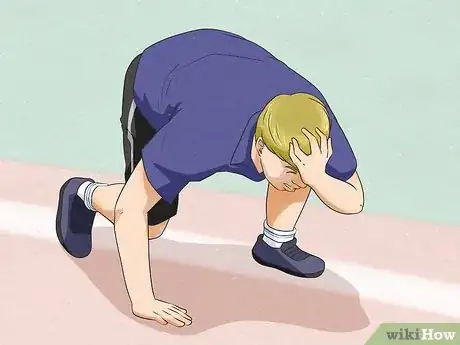

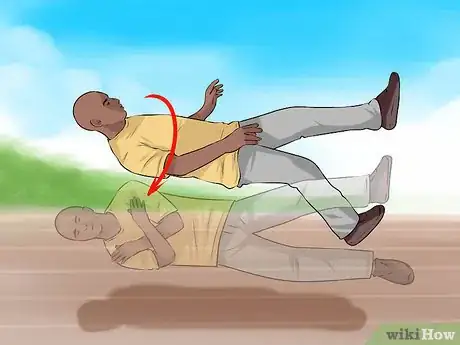


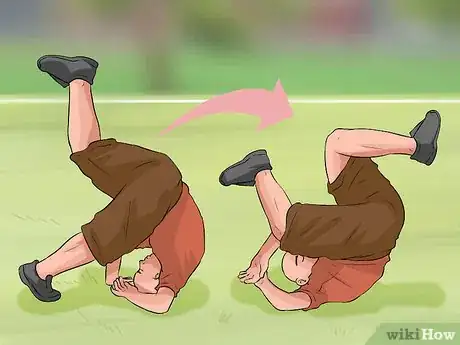

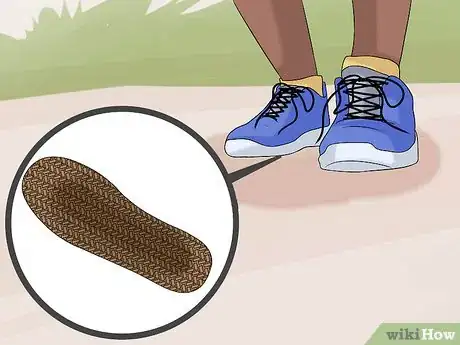
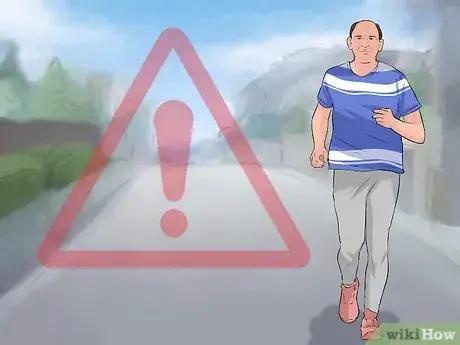





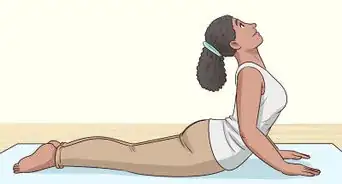


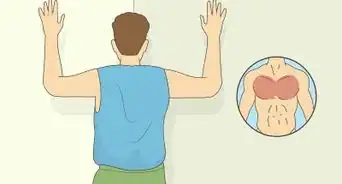
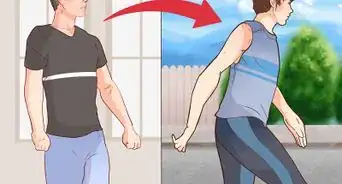
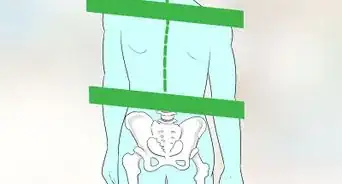
















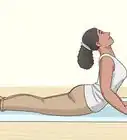




































Medical Disclaimer
The content of this article is not intended to be a substitute for professional medical advice, examination, diagnosis, or treatment. You should always contact your doctor or other qualified healthcare professional before starting, changing, or stopping any kind of health treatment.
Read More...